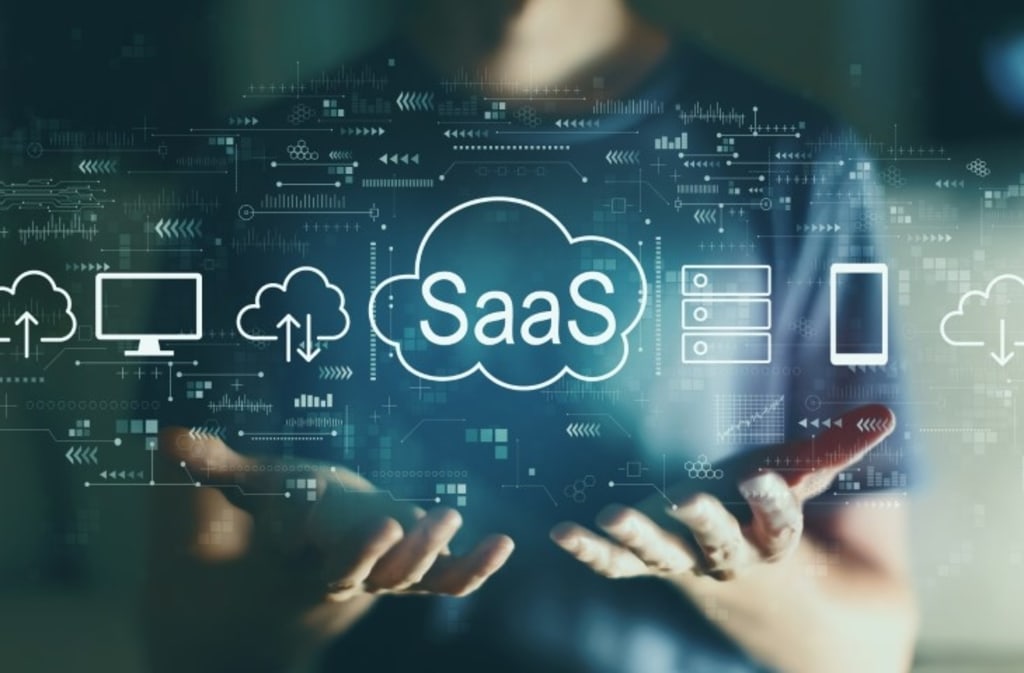
The SaaS model has become increasingly popular in recent years, due in large part to its many advantages over traditional software delivery models. One of the biggest advantages of SaaS is that it eliminates the need for customers to invest in expensive hardware and software infrastructure to support their software applications.
Instead, customers pay a monthly or annual subscription fee to access the software over the internet, and the vendor or service provider takes care of all of the infrastructure and maintenance tasks.
Another key advantage of SaaS is that it provides customers with a high level of flexibility and scalability. Because SaaS applications are hosted remotely, customers can easily scale their usage up or down as needed, without having to worry about purchasing additional hardware or software licenses.
This makes SaaS a particularly attractive option for businesses that experience seasonal or unpredictable demand for their software applications.
Perhaps the biggest advantage of SaaS, however, is that it provides customers with a high level of accessibility and convenience. Because SaaS applications are hosted remotely, customers can access them from anywhere with an internet connection, using any device that supports a web browser.
This means that users can easily work from home, on the road, or from any location with an internet connection, without having to worry about carrying around bulky hardware or software.
SaaS applications are available for a wide range of business functions, from customer relationship management (CRM) and human resources management (HRM), to accounting and finance, project management, and more.
Some of the most popular SaaS applications include Salesforce for CRM, Slack for team collaboration, QuickBooks for accounting, and Dropbox for file storage and sharing.
While the benefits of SaaS are clear, there are also some potential drawbacks to consider. One of the biggest concerns with SaaS is data security.
Because SaaS applications are hosted remotely, customers must trust the vendor or service provider to keep their data safe and secure. This can be particularly concerning for businesses that handle sensitive or confidential data, such as financial or healthcare information.
Another potential drawback of SaaS is that it can be more difficult to customize or integrate with other software applications than traditional software.
Because SaaS applications are hosted remotely and accessed over the internet, they may not offer the same level of customization options or integration capabilities as software that is installed locally on a user’s computer or server.
Despite these concerns, however, the benefits of SaaS have made it an increasingly popular choice for businesses of all sizes and industries. In fact, the SaaS market is projected to grow from $158 billion in 2020 to $307 billion by 2026, according to a recent report from MarketsandMarkets.
So, how do you get started with SaaS? The first step is to determine which SaaS applications are best suited to your business needs. This will depend on a number of factors, including your industry, your business size and goals, and your specific software needs. Once you’ve identified the SaaS applications that are right for you, the next step is to research potential vendors or service providers.
When evaluating SaaS vendors, there are a number of factors to consider. One of the most important is pricing. While SaaS applications can be more affordable than traditional software in many cases, it’s important to make sure you understand the vendor’s pricing structure, and any additional fees or costs that may be associated with using the application.
Another important factor to consider is data security. Make sure that the vendor you choose has a strong track record of keeping customer data safe and
secure, and that they have appropriate security measures in place to protect your data from cyber threats and unauthorized access.
It’s also important to consider the level of customer support and service that a SaaS vendor offers. Look for vendors that have a dedicated support team that is available to answer questions and address any issues that may arise. Some vendors may also offer additional services, such as training or consulting, to help you get the most out of your SaaS applications.
Once you’ve chosen a SaaS vendor and subscribed to their service, the next step is to get started with the application. Most SaaS applications are designed to be easy to use, with intuitive interfaces and built-in help resources. However, it’s still a good idea to familiarize yourself with the application’s features and functionality, and to take advantage of any training or support resources that are available.
In conclusion, SaaS is a software delivery model that offers many advantages over traditional software delivery models. By eliminating the need for expensive hardware and software infrastructure, providing flexibility and scalability, and offering high levels of accessibility and convenience, SaaS has become an increasingly popular choice for businesses of all sizes and industries.
While there are potential drawbacks to consider, such as data security and customization limitations, the benefits of SaaS have made it a market that is projected to continue growing in the coming years. If you’re considering SaaS for your business, be sure to carefully evaluate potential vendors, and to take advantage of any training and support resources that are available to help you get the most out of your SaaS applications
About the Creator
alena
microdeft.com





Comments
There are no comments for this story
Be the first to respond and start the conversation.